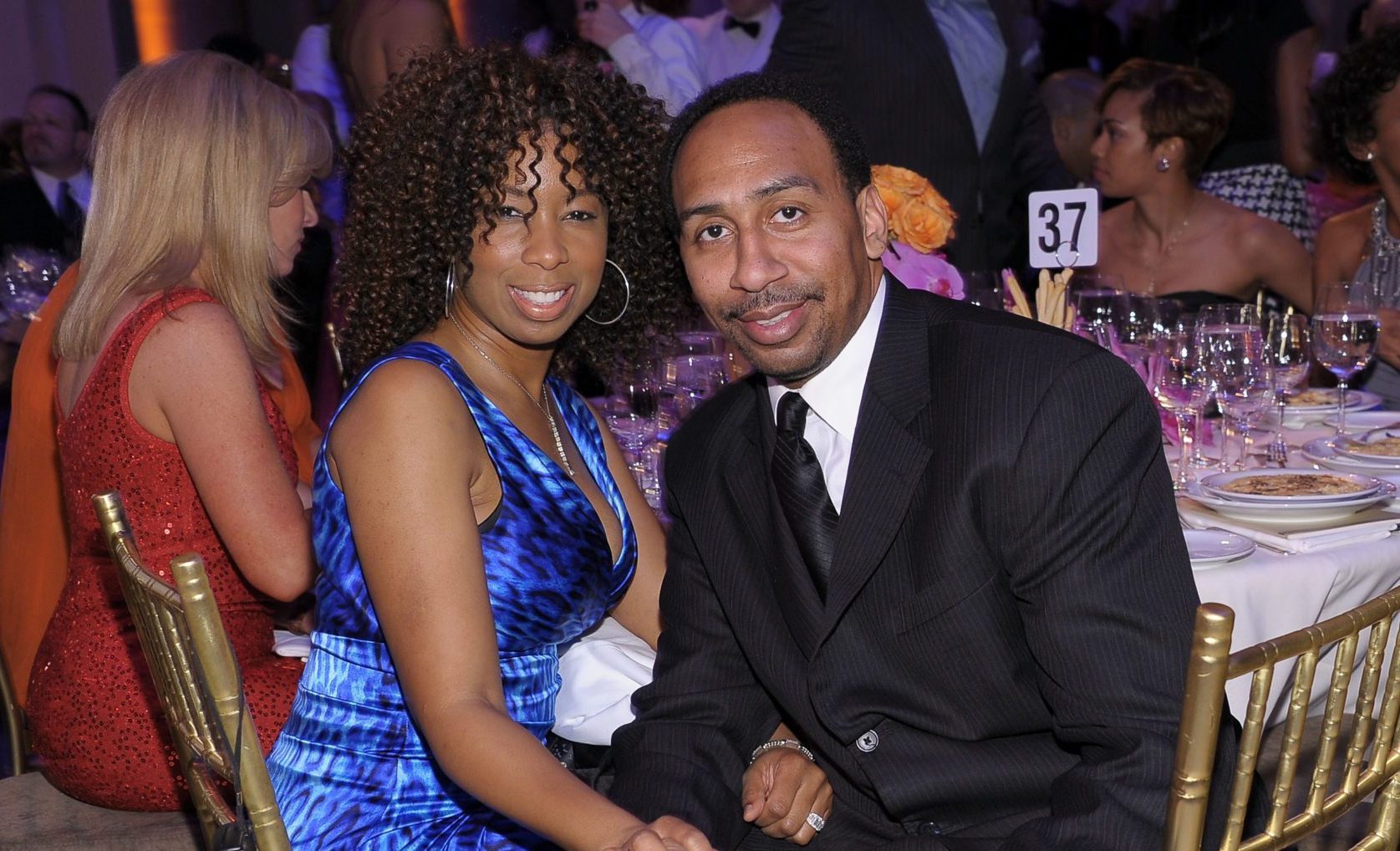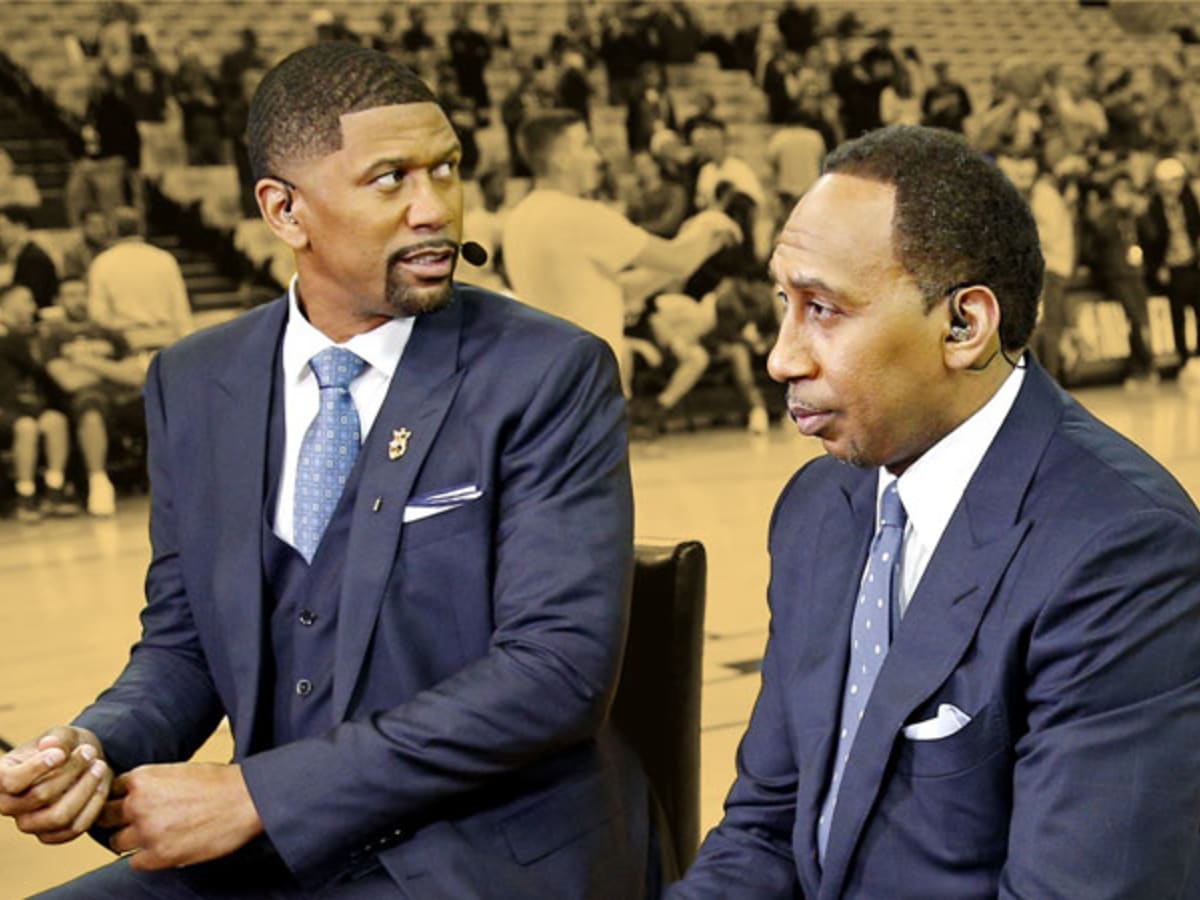Is Stephen A. Smith truly a controversial figure in the world of sports media, or is there more to the story than meets the eye? His career, filled with impassioned debates and bold opinions, has cemented his place as a prominent personality, but also as a lightning rod for criticism.
The public persona of Stephen A. Smith is undeniable. He is a sports pundit, an ESPN personality, and a figure who often courts both attention and controversy. His pronouncements on everything from LeBron Jamess parenting to his colleagues' professional relationships have sparked heated discussions across the internet and in the media landscape. In a world where opinions are a dime a dozen, Smith's are often amplified by his undeniable charisma and a willingness to be provocative. This has led to questions about his motivations and the authenticity of his commentary. But is this perception justified?
| Category | Details |
|---|---|
| Full Name | Stephen Anthony Smith |
| Date of Birth | October 14, 1967 |
| Place of Birth | Bronx, New York City, New York, U.S. |
| Education | Winston-Salem State University (B.A. in Journalism) |
| Known For | Sports Commentator, Television Personality, Radio Host |
| Current Role | Analyst on ESPN's "First Take" and "NBA Countdown" |
| Key Career Moments |
|
| Personal Life |
|
| Controversies | Known for opinions that have generated strong reactions, including those on athlete parenting and relationships with colleagues. |
| Website Reference | ESPN |
Critics often label Smith as a media prostitute, suggesting he adapts his opinions to appease those in power, specifically Disney, which owns ESPN. This viewpoint suggests that his commentary is driven by a desire for financial gain and maintaining his position, not genuine analysis or conviction. This narrative paints Smith as someone willing to say whatever is necessary to stay relevant and rich, potentially sacrificing journalistic integrity for celebrity.
The scrutiny of Smiths career intensified when examining his comments on LeBron James and his son, Bronny. His suggestion that LeBron should put a stop to Bronnys pursuits was perceived as a criticism of Jamess parenting. While Smith may argue he was simply providing an opinion within the bounds of sports analysis, critics saw it as an unnecessary personal attack, crossing the line from professional commentary to personal judgment. This instance fuels the argument that Smith will go to any length to generate buzz and headlines.
Adding complexity to the accusations against Smith is the alleged drama surrounding his relationships with colleagues, particularly Shannon Sharpe and Molly Qerim. Some reports hinted at attempts to weasel his way into Sharpe's circle before Sharpe's departure. While Smith, along with Qerim, has explicitly denied rumors of a romantic relationship, the continuous speculation underscores how easily public perception can shape narratives, regardless of truth.
The accusations, though harsh, are rooted in the understanding of Smiths role as a sports personality. It is a world in which he is expected to talk about athletes and their personal lives. Given that he is a sports pundit, the criticism against players, including Bronny James, is deemed fair game for him to discuss. If LeBron didn't want such discussions, the logic goes, he should not have placed his son in the public eye.
Smiths willingness to delve into the personal lives of athletes and make bold predictions is part of what made him famous. He has developed a brand that thrives on controversy, and his role necessitates a degree of theatrics. However, whether this theatrics transcends into the realm of fabrication is what many people argue about.
The public's reception to Smith's comments is often highly polarized. Some people express a degree of respect for Smith's honesty, regardless of how polarizing it might be. Others, however, see him as inauthentic, suggesting that his pronouncements often serve self-interests. The reality, as with many public figures, likely resides somewhere in the center, acknowledging both the strategic nature of his commentary and the personal elements that shape his views.
A recurring theme in the criticisms aimed at Smith is the allegation that he prioritizes generating headlines over offering genuine analysis. The frequent use of hyperbole and a tendency toward provocative statements support this charge. The argument is that he chooses sensationalism to maintain relevance in a crowded media field. This strategy, while successful in some ways, comes with the risk of alienating viewers who look for unbiased insight.
A specific incident that highlights the complexity of how Smith operates is the commentary about his colleague, Molly Qerim. While the two consistently dismissed any romantic rumors, the repeated discussions about their relationship, whether initiated by Smith or others, fueled the gossip mill. The public is thus left to guess, and question the integrity of both parties involved.
Beyond his professional life, aspects of Smith's personal life are often subjects of speculation. He has been photographed on vacation in Barbados with a mystery woman. Details are scarce, but the intrigue highlights the intense interest surrounding his life outside of the studio. This also proves his awareness of his fame and how it impacts every aspect of his life.
Stephen A. Smith also has two daughters from two different women. He confirmed this in a 2019 interview. The lack of detail about their mothers and his personal romantic relationships adds mystery and speculation to his personal life. This private aspect contrasts sharply with his often public pronouncements on other peoples' lives, adding to the complexity of his public image.
The ongoing scrutiny of Smith's career and his personal life will likely continue. Whether one views him as a shrewd media personality or a purveyor of misleading commentary often depends on individual perspectives and values. What remains certain is that Smith will persist in taking center stage in sports media, and his pronouncements will continue to spark debate and fuel discussion.
For example, there's a narrative that Smith was, at some point, angling to replace Shannon Sharpe. It is the notion that he tried to insert himself into Sharpe's professional circle. It is often implied, without concrete evidence, that these actions were driven by ambition, a need to be a celebrity, and a desire to maintain his position on top.
The frequent debates about Smith's commentary often revolve around the ethics of sports journalism and the role of personalities in shaping public opinion. Smiths influence extends beyond mere sports analysis; he influences views on morality and culture, which makes his commentary both influential and potentially hazardous.
The case of Stephen A. Smith presents a fascinating case study in the intersection of media, fame, and personal brand. Whether he is a brilliant strategist, a cunning opportunist, or merely a personality playing the game, his continued success demonstrates his ability to thrive in today's competitive media environment. His story serves as a reminder of how media works, how audiences form their opinions, and how the lines between truth, opinion, and entertainment can blur.
In the final analysis, Stephen A. Smith is a complex figure whose persona and career are consistently in a state of evolution. The controversies surrounding him reflect the pressures of contemporary media and the public's constant demand for engaging content. His ability to garner attention, generate buzz, and maintain a commanding presence is evidence of a personality adept at navigating the modern media landscape.
Whether Smith's strategy to court controversy will result in a long and prosperous career remains to be seen. His choices reflect broader trends in media, in which personalities are rewarded for their ability to generate discussions. His story reminds us that the truth can be a difficult thing to find, but it's important to always search for it.


